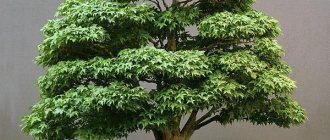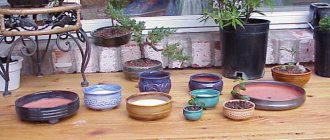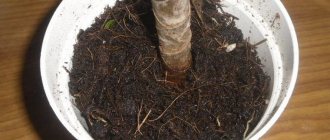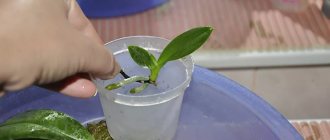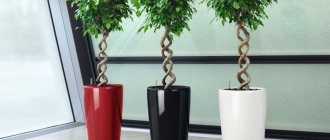Sakura impresses with its exquisite and uniquely delicate blossoms. In East Asia, the Japanese cherry tree is a national symbol that is protected by law. During its flowering, a holiday is held where everyone worships the fabulous tree.
Under natural conditions, the plant reaches several meters. Many people grow miniature copies. Sakura bonsai is an exact copy of an adult plant, reduced many times. It is worth noting that bonsai is a national culture of growing trees in a bowl.
Description of the plant
Sakura bonsai is an ornamental tree that does not require special care conditions. The plant is resistant to the dryness of city apartments, indoor gas pollution, watering and lighting.
Japanese cherry has become a favorite among gardeners due to its amazing flowering. Inflorescences with a diameter of 1 cm tightly frame the branches, creating a monochromatic cloud.
In nature, sakura blooms with bright pink flowers. Breeders have tried and artificially bred plants with a variety of shades.
Symbolism
100 yen coin featuring cherry blossoms
In Japan, cherry blossom symbolizes clouds (due to the fact that many cherry blossoms often bloom at once) and metaphorically denotes the ephemeral nature of life. This second symbolic meaning is often associated with Buddhist influences, embodying the idea of mono no aware. The connection between sakura and mono no aware has been known since the 18th century, when it originated with Motoori Norinaga. The fleeting nature, extreme beauty and quick death of flowers is often compared to human mortality. Due to this, the cherry blossom is deeply symbolic in Japanese culture, its image is often used in Japanese art, anime, cinema and other areas. There is at least one folk song called , as well as several j-pop songs (including , , ). Sakura blossoms appear on all types of Japanese consumer products, including kimonos, stationery and tableware.
Sakurakai, "sakura society", was chosen as the name of an ultra-nationalist society by young Japanese army officers who twice attempted a coup d'état. In World War II, cherry blossoms were used by militaristic propaganda as a motivational symbol for Japan. Before the war, they were also used to strengthen the "Japanese spirit", in particular in the song "Song of Japanese Youth" (Japanese: 青年日本の歌seinen nihon no uta
) spoke of “warriors” who were ready to die like cherry blossoms. In 1932, Akiko Yosano wrote in poetry to encourage soldiers to endure suffering in China, comparing the dead to cherry blossoms. Objections to the planned maneuvers in the Battle of Leyte Gulf, based on the danger of withdrawing all the ships of the fleet at once and the risk of losing, were met with phrases that the fleet should be allowed to bloom like the flowers of death. The last message from Japanese forces on Peleliu read: "Sakura, sakura." Japanese pilots painted cherry blossoms on planes before going on kamikaze missions, and even took cherry branches with them. The cherry blossoms painted on the fuselage symbolized the intensity and fragility of life, and the falling flowers were reinterpreted as youth sacrificing their lives for the glory of the emperor. The first kamikaze squad included the Yamazakura unit, wild sakura. The state even supported the view that fallen warriors were reborn into flowers. To this day, the five-petaled stylized cherry blossom is a major motif in Japanese military heraldry, used in the same circumstances where Western tradition uses a (five-pointed) star, such as in military rank insignia or as a cockade.
In the colonies, the Japanese tried to plant sakura flowers, which was one of the ways to express claims to territory.
Sakura is the dominant motif in Japanese irezumi tattoos. There, cherry blossoms are often depicted along with other traditional motifs - carp, dragons and tigers.
How to grow a tree from seeds
Sakura bonsai, like other plants, can be grown by seed. True, this process is very difficult and very troublesome. Since bonsai takes 15-20 years to form, homemade sakura will require a lot of patience.
Where to buy sakura seeds and how to grow a flowering plant at home is of interest to many beginners and amateurs. After all, sakura is a plant with amazing flowering, and its formation in the form of a tree on a tray will be the most exciting activity.
Japanese cherry seeds are purchased at specialized garden centers, although they appear there very rarely.
Advice! If you find sakura seeds, you should stock up on planting material, since they sprout “infrequently and sparsely.” According to the observations of professionals, out of 10 seeds, only 1-2 germinate, that is, the germination percentage is 10-20%.
There is a technology for growing sakura from seeds at home:
- After purchasing, each seed should be scarified (pricked, filed), since their shell is very durable.
- Place in warm water for 24 hours to swell.
- After this - into moist soil to a depth of no more than 2 cm.
- Cover the pot with film and place in a cool place (bottom shelf of the refrigerator, cellar). The stratification period is 60-70 days.
- After the “cooling” period has expired, the pot is placed in a bright place and kept at room temperature.
- When seedlings appear, young specimens should be immediately transplanted into special bonsai pots - flat pots. When picking in groups, the distance between young plants should not be more than 10 cm.
Important! The sakura plant has many varieties, each of which has special characteristics and requirements for cultivation. That is why, when purchasing seeds, it is recommended to study what kind of soil, watering and fertilizing regime a particular variety of Japanese cherry prefers.
Sakura seeds are sown in April-May. The soil used is a mixture of coarse sand, sphagnum moss, and vermiculite. The first sprouts appear within 2 weeks after moving the flowerpots to heat.
The incomparable blossoming of sakura, photos of which are presented on the Internet, pleases the eye much earlier than the appearance of leaves and other flowers in the garden. As a rule, already in April-May the tree is densely covered with flowers up to 1 cm in diameter. The month of cherry blossoms depends on the climatic conditions of the region and the plant variety. Unfortunately, the flowering does not last long, but the beautiful pink cloud is replaced by noble greenery. And Sakura again captivates with its appearance.
How to plant potted sakura is recommended by professionals. Despite the variety of the species, young plants need picking. In addition, seedlings are replanted every 3-4 years as they grow (replantation is not performed in winter - the plant is dormant).
How to plant and pick sakura at home
Proper planting is half the success of future sakura growing:
- treat the seeds with a fungicide;
- moisten the substrate;
- deepen the seeds half a centimeter into the grooves made (there should be at least 3 cm between them);
- cover the planting with a thin layer of fine-grained sand;
- cover the pot with film or glass;
- leave at a temperature of +5…10 °C.
Attention! Gardeners recommend planting seeds in the spring or at the turn of August and September.
Seedlings should appear in 1.5-2 weeks. Until this point, care consists of keeping the top layer of soil moist, providing plenty of light, and gradually raising the temperature to room temperature. When shoots appear, plant them in separate pots. The distance between seeded seedlings should not be more than 10 cm if you move them to a new common container.
Sakura blossom
Picking is an important condition for the normal development of sakura. Repeated transplants help strengthen the root system. Sakura seedlings are left untouched only in the cold season. They are placed in a cool, shaded room until spring. The key point in picking grown seedlings is the selection of new pots. The gardener has two options:
- leave the crop to grow in a cramped container and form a bonsai version of the tree;
- move it to deeper and wider pots and prepare the tree for the garden.
Picking
Plant picking is extremely important for the development of a tree. The first picking should be carried out immediately after germination. Small seedlings are planted in 100 ml cups. The substrate is made up of 7 parts turf soil, 3 parts sand (disinfection and roasting in the oven are mandatory) and 1 part humus. During the first pick, the root is shortened by 1/3.
The second picking of plants is carried out after 2 months. During the period of work, the root is pinched by 2/3 and the plant is slightly buried. The soil used is of the same composition.
The third pick is carried out after the sakura grows. But not more often than 2 months after the second procedure. It is recommended to repot the plant when the plant to pot height ratio is 2:1.
Sakura is a symbol of Japan
When the god of the mountains invited Ninigi, the grandson of the Sun goddess, to marry one of his daughters, he decided that if he gave preference to the eldest, High Rock, the life of their descendants would be eternal and durable, like stones. But if he prefers the youngest, Blooming, then the life of their children, regardless of social status, will be beautiful, but short, like cherry blossoms. Ninigi chose Blooming and became the ancestor of the Japanese emperors.
The Japanese, annually contemplating the beauty of this amazing plant and looking at the fragility of its flowering, reflect on the fact that beauty does not last forever, and life is fleeting and fragile. Therefore, it very much resembles a crumbling sakura flower - although it is beautiful, it leaves too soon: it is not for nothing that cherry blossoms symbolize the frailty of life and the fickleness of existence.
Bonsai care rules
There is very little information about sakura: what kind of tree is it, how to care for it? Those who were lucky enough to grow a blooming beauty from seeds say: indoor sakura is very difficult to care for and requires daily attention. Although seed sellers claim its unpretentiousness.
Competent tips on how to care for sakura at home include:
- Organization of the watering regime: in summer the tree is watered with 100-125 ml of water per day, in winter watering is reduced.
- Creating a sufficient amount of light: bonsai pots are kept in the brightest rooms, but without drafts or direct sunlight.
- Annual replanting with shortening of the root system: the plant is grown in a bowl with a diameter of 15-20 cm.
- Soil preparation in accordance with the requirements of a particular variety: sakura loves nutritious soil with a high content of nitrogen, humus, and potassium.
Important! Organic fertilizers are applied to the soil a month before replanting the plant, that is, the soil for sakura is prepared in advance. Mineral fertilizers are added during the transplantation period.
When growing a tree in the bonsai style, you should also worry about the formation of the crown. The trunk of a young plant is fixed with wire, and characteristic bends are created if necessary. When the plant rises 20-30 cm, the main trunk is cut off. This promotes the formation of side shoots.
Bonsai is a miniature tree that requires constant pruning. The side shoots are pruned after flowering, shaping the direction of the branches.
Important! A simple way to control the growth of a bonsai is to make a series of horizontal cuts in the tree bark. Mechanical damage leads to weakening of the tree and stops its development. But this should be done extremely carefully.
Currently, there are a huge number of ways to form a crown. Creation of an individual style begins when the plant is 2-3 years old.
Even with minimal care and the creation of optimal conditions, the plant will delight you with its flowering every year.
Which container is better to choose?
To optimize cultivation, you should ensure the correct dimensions and parameters of the containers in which the seeds will grow. The container used should be wide enough for freedom of growth and development of the plant.
The depth should be approximately 5 centimeters - this way the root system at the initial stage of growth will have enough space for active growth. Be sure to make sure that the container has drainage holes, because normal water circulation allows you to saturate the plant with the elements necessary for development.
All about the view
A little history. The art of bonsai has reached perfection in growing miniature indoor plants in exact replicas of large trees growing in nature. According to legend, the Chinese emperor wished to see his empire in miniature - with forests, fields, gardens and trees. His gardeners were able to grow dwarf trees to fulfill the will of the monarch.
After some time, the art of bonsai ended up in Japan, where it received its modern name and development. Various types of small trees look like real ones. Throughout their life, trees gain only 1–2 cm in height. At the same time, they require constant care - they must be trimmed correctly, constantly monitor the shape of the crown, pulling the branches with wire, fertilize and water.
One type of dwarf tree is the cherry bonsai (sakura). The tree has a brown trunk with a dense umbrella-shaped crown. In its natural environment, it is decorated with white and pink flowers. They grow quite densely - 2-5 flowers in one inflorescence bunch, their double color covers the entire crown.
Purple, red, blue and other flower colors are artificially bred. The leaves are small, green, and turn red or crimson in autumn. After the flowers, sakura produces black fruits, but birds prefer to feed on the flower buds.
Typical beginner mistakes
Sakura is considered a difficult type of bonsai to care for. To grow it, it is advisable to have basic skills in caring for such a crop, acquired by forcing simpler species - myrtle, olive tree, Benjamin or Microcarp ficus. Typical mistakes made by novice amateurs include:
- excessive watering. Knowing the danger of skipping watering, amateurs pour water into the pan, hoping that the plant will take “as much as it needs.” As a rule, the tree dies within a week;
- non-compliance with temperature and seasonal regimes - fertilizing in winter and the decision to add lighting with a regular lamp. Because of this, in the air already dried out by central heating, the plant suffers more;
- The wire is pulled too tightly on the stem. When the wire cuts into the bark, it injures it. The tree suffers such damage painfully.
It should be noted that those who begin to grow difficult-to-care bonsai cannot do without the death of seedlings. If you analyze your mistakes and learn from what happened, this can be avoided next time.
Departure point: cherry pit
The luxurious overseas guest is capricious and whimsical to grow, but, nevertheless, it is increasingly found in our gardens, parks, and city squares.
As befits a cherry, a Japanese beauty grows from the seed of a cherry fruit. The long journey of turning a small cherry pit into a mature tree is not the easiest, but the end result is worth the effort and time spent. It starts, of course, with the acquisition of planting material.
If you have an adult fruiting Japanese cherry tree in sight (from friends or on your own farm), you can stock up on seeds from it by collecting ripe fruits and freeing the seeds from the shell. Another option is to purchase ready-made seeds from an online store.
Sakura seeds
The species diversity of sakura is quite large, but not all varieties take root in the Russian climate. Our winters tolerate the following varieties of sakura without problems:
- Kikushidare – 3-5 meter tree with double flowers
- Kwanzan – with large purple flowers
- Spire and Shidare Yoshino are specially bred frost-resistant varieties that can withstand temperatures down to -30 degrees
- Halle Olivetti is also a frost-resistant species
Thanks to selection and development of new varieties, today there are often cases of successful cultivation of sakura even in Siberia.
Before planting in the soil, the seeds should be soaked in warm (30 degrees) water for a day. It would be nice to add fungicides or growth stimulants to the liquid - additional protection for capricious fruits will not be superfluous. The outer shell of cherry seeds is very hard, therefore, to facilitate germination, you need to carefully prick or cut the shell, but in no case damage the inside.
On a note! Sakura seeds do not germinate well, so you need to plant them “with a reserve”, taking into account potential losses (even just 20 percent germination of the material is considered the norm).
After soaking for a day, the bones are ready for further procedures.
Preparation
It is necessary to understand how to properly plant a sakura tree at home so that it takes root and can bloom. It is because of the beautiful flowering that many people grow this crop at home. It is worth considering that the aroma in the apartment is quite strong, so if you have allergies, it is not recommended to grow this tree in your apartment. Find out more about the preparatory stage for planting sakura.
Pot shape
It is strongly recommended that you take your pot selection seriously. Here are a few things to keep in mind:
- it is required that it has a drainage system;
- you need to choose oval or square shaped pots;
- The size of the pot should initially be only 5–7 cm in diameter, and then it should be increased by 2–3 cm every 2–3 years.
How to choose soil?
You can easily find suitable soil in specialized stores. However, some gardeners prefer to do it themselves. The substrate must be correctly selected for the plant to feel good.
Here's what you'll need to use:
- river sand;
- clay;
- lava;
- pumice;
- humus.
In what conditions to grow?
Sakura bonsai is considered a relatively unpretentious plant. Therefore, it is easy to grow at home even for beginners.
However, it is necessary to consider several factors that affect the growth and health of the crop:
- The plant is thermophilic. This means that during the hottest part of the day it is recommended to store it in the sun. Then you can get beautiful and abundant flowering.
- In the off-season and winter, it is worth placing the pot on the south side.
- Sakura needs cool air and direct sunlight, which most bonsai plants cannot tolerate.
- The air temperature should be from 15 to 27 degrees.
- You need to be careful about watering. The soil should be moist, but not too moist. Otherwise, the tree will quickly die.
If you create all the conditions correctly, you can achieve beautiful and abundant flowering, which will delight the gardener.



